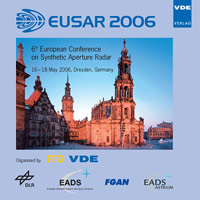Application of ERS-ENVISAT Cross-Interferometry to Coastal DEM Construction
Conference: EUSAR 2006 - 6th European Conference on Synthetic Aperture Radar
05/16/2006 - 05/18/2006 at Dresden, Germany
Proceedings: EUSAR 2006
Pages: 4Language: englishTyp: PDF
Personal VDE Members are entitled to a 10% discount on this title
Authors:
Hong, Sang-Hoon; Won, Joong-Sun (Yonsei University, Korea)
Abstract:
To observe active changes in tidal flats or coastal areas, high precision digital elevation model (DEM) in a time series is valuable. It is difficult to construct coherent interferometric SAR pairs in coastal areas by using repeat-pass spaceborne SAR because of temporal decorrelation caused by dynamic changes in tidal flats. To obtain pairs under similar tidal conditions, cross interferometry technique was applied to ERS-ENVISAT tandem pairs with a perpendicular baseline of 1.4 km and a height ambiguity of 6 m. The small height sensitivity is favourable to construct DEM in low relief coastal areas. Accurate coregistration was performed to make pixel spacing of ENVISAT ASAR data equivalent to that of the ERS SAR data. As range bin increased, the difference of Doppler centroid also increased. It resulted in lower coherence in far range than in near range. Although the average difference of Doppler centroid was 540 Hz, the difference was a function of the radar range. The differences of Doppler centroid ranged from 450 Hz to 600 Hz. The range varying Doppler centroid difference causes degradation of coherence. Although coherence was improved by common-band azimuth filtering, the coherence decreased as range increased. Coherence was about 0.8 in the near range but reduced to 0.5 in the far ranges. Preliminary results of interferometric pairs from Korean tidal flats and German Wadden Sea are presented and compared.


